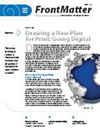印度喜马偕尔邦农业系统气候脆弱性评估
IF 1.8
4区 环境科学与生态学
Q4 ENVIRONMENTAL SCIENCES
引用次数: 3
摘要
本研究评估了喜马偕尔邦Kullu地区的农业、园艺和畜牧业在区块尺度上的气候脆弱性。这个地区的气候变化最明显。研究地点被选择代表不同的高程带。这些部门共选择了108个指标,作为适合山区视角的方法框架来评估气候脆弱性。农业部门的净气候脆弱性最低的是那些道路网络可达性更高、离市场更近、识字率高、机构更多、向农业以外的企业转移的街区。园艺的净脆弱性指数(VI)表明,向淡季蔬菜种植、作物生产土壤和建立新果园的转变降低了脆弱性。如果病虫害较少并得到迅速管理,如果有良好的兽医设施,如果斜坡不那么陡峭,如果有改良的草地,畜牧部门的净指数VI就会较低。该农业系统不同部门所有区块的综合净VI显示,Naggar区块最不脆弱,其次是Kullu和Nirmand。本文章由计算机程序翻译,如有差异,请以英文原文为准。
Climate Vulnerability Assessment of Farming Systems in Himachal Pradesh, Indian Himalayas
This study assessed the climate vulnerability of the agriculture, horticulture, and livestock sectors at the block scale in the Kullu district of Himachal Pradesh. This region exhibits the most conspicuous manifestations of climate change. The study sites were selected to represent different elevation zones. A total of 108 indicators for the sectors were chosen to assess climate vulnerability as a methodological framework suitable for a mountain perspective. The net climate vulnerability in the agriculture sector was lowest in blocks that had greater accessibility to the road network, were nearer to markets, had high literacy and more institutions, and were shifting to enterprises other than agriculture. The net vulnerability index (VI) for horticulture revealed that vulnerability was reduced by a shift toward off-season vegetable cultivation, productive soils for crops, and the establishment of new orchards. The net VI of the livestock sector was lower if there were fewer diseases and pests and they were quickly managed, if there was good access to veterinary facilities, if slopes were less steep, and if improved grassland was available. The composite net VI of all blocks in different sectors of this farming system revealed that the Naggar block, followed by Kullu and Nirmand, was the least vulnerable.
求助全文
通过发布文献求助,成功后即可免费获取论文全文。
去求助
来源期刊
CiteScore
3.10
自引率
18.80%
发文量
36
审稿时长
4.5 months
期刊介绍:
MRD features three peer-reviewed sections: MountainDevelopment, which contains “Transformation Knowledge,” MountainResearch, which contains “Systems Knowledge,” and MountainAgenda, which contains “Target Knowledge.” In addition, the MountainPlatform section offers International Mountain Society members an opportunity to convey information about their mountain initiatives and priorities; and the MountainMedia section presents reviews of recent publications on mountains and mountain development.
Key research and development fields:
-Society and culture-
Policy, politics, and institutions-
Economy-
Bio- and geophysical environment-
Ecosystems and cycles-
Environmental risks-
Resource and land use-
Energy, infrastructure, and services-
Methods and theories-
Regions

 求助内容:
求助内容: 应助结果提醒方式:
应助结果提醒方式:


